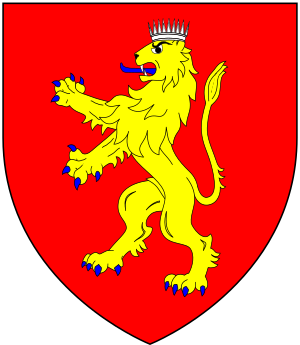Thomas Northmore (politician) facts for kids
Thomas Northmore (born around 1643, died 1713) was an important person from Devon, England. He lived at a place called Cleve near Exeter. He was a lawyer and also worked as a Master in Chancery, which was a high legal position. He was also a Member of Parliament for Okehampton from 1695 to 1708. This means he helped make laws for the country.
Family Background
Thomas Northmore was the fourth son of John Northmore (died 1671). His father was a lawyer from Well, a place in South Tawton, Devon. Thomas's mother was Joan Stronge (died 1686).
Thomas had an older brother named John Northmore (1635/6-1713). This brother became the first town clerk of Okehampton in 1684. Thomas also had a younger brother, Jeffery Northmore (1643-1724). Jeffery's family continued to live at Cleve and Well. A famous descendant of Jeffery was Thomas Northmore (1766–1851), who was a writer, inventor, and geologist.
His Work and Public Life
In 1705, Thomas Northmore bought the manor of Cleve. This estate was in the parish of St Thomas, near Exeter.
In 1695, Thomas was chosen as one of the two Members of Parliament for Okehampton. As a lawyer from the Inner Temple, he helped many important families in Devonshire. For example, he worked for Richard Coffin (1623-1700) of Portledge. Richard Coffin was the Sheriff of Devon in 1685. Thomas Northmore acted as his Sheriff-Deputy.
After a big uprising called the Monmouth Rebellion was defeated, Thomas Northmore helped manage the trials. These trials were led by Judge Jeffreys starting in August 1685. Thomas was told to arrange for prisoners to be punished in larger towns to save money. He reported that many rebels were found guilty. Some were to be executed, and others were sent away from the country. He said he would not want to go through such a difficult year again.
Marriages and Children
Thomas Northmore was married three times:
- His first wife was Anne Pridham (died 1686). They had two daughters:
* Elizabeth Northmore (1680-1683), who died when she was very young. * Anne Northmore (died 1717), who was his oldest daughter to survive. In 1711, she married her cousin, William Northmore (1690-1735). William later became a Member of Parliament for Okehampton. Anne died six years later and did not have any children.
- In 1686 or 1687, he married Elizabeth Andrew (died 1689). She was the daughter of Soloman Andrew from Lyme Regis in Dorset. They did not have any children.
- In 1690, he married Elizabeth St Aubyn (died 1735/6). She was the daughter of John St Aubyn from Clowance in Cornwall. They also did not have any children.
Death and Legacy
Thomas Northmore passed away on July 25, 1713. He did not have any sons. He was buried in St. Thomas's Church in Exeter. There is a monument there that shows his family shield. It also shows the shields of his first wife, Anne Pridham, and his second wife, Elizabeth Andrew. The shield of his third wife, Elizabeth St Aubyn, is also shown.
Thomas Northmore left his property to his nephew and son-in-law, William Northmore. This included the manor of Cleve and other lands in Devon. He also left him parts of Topsham Quay in Exeter.


